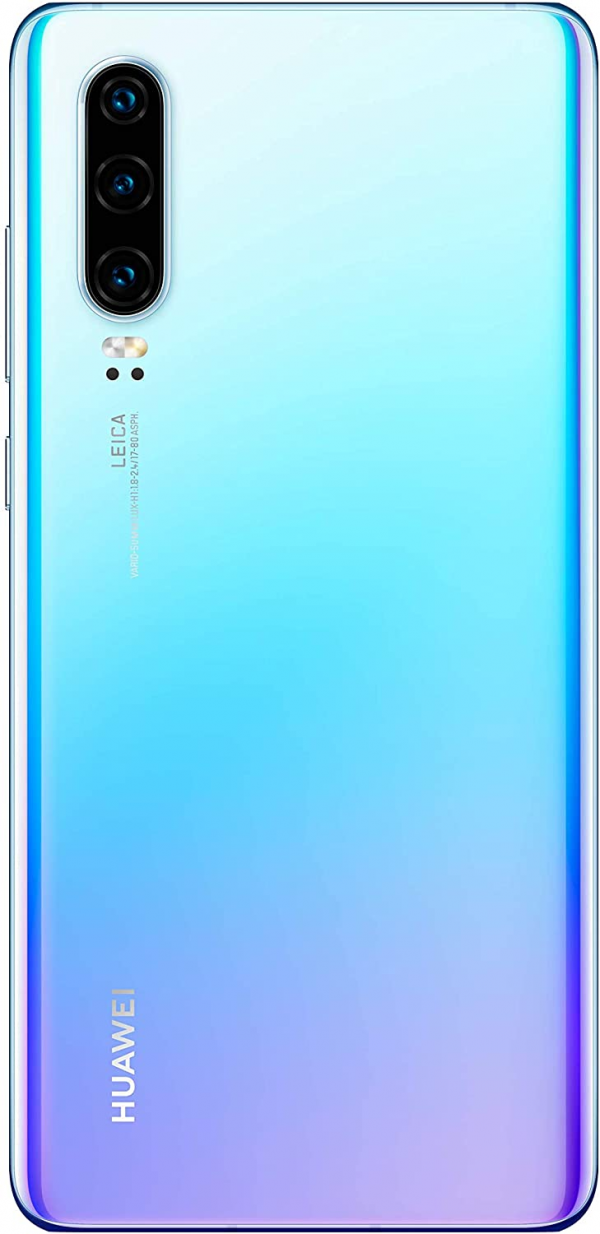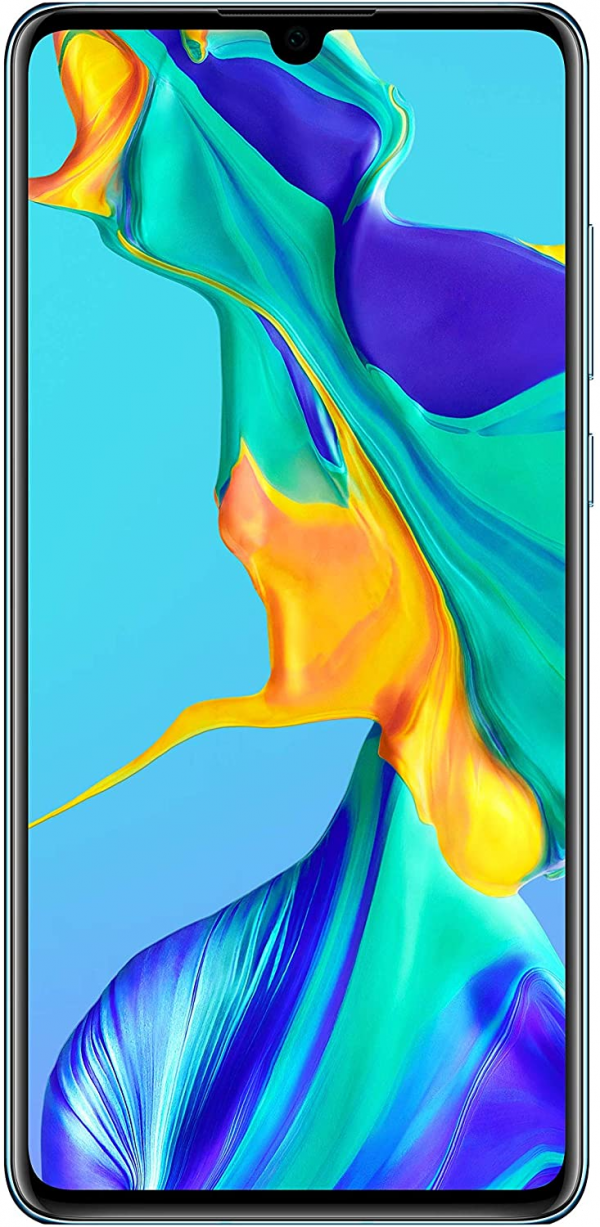Huawei
Huawei P30: a versatile and successful smartphone
Aprox. 588€ - see price -
See specificationsWith its triple photo module, its Oled panel and its powerful chip, the P30 has everything to be an attractive high-end photophone. Here it stands the test of our laboratories ...
Our review
Presentation
Updated 05/20/2019 at 02:20 PM
Attention, Google having ended its collaboration with Huawei / Honor, the future software of the launch mobiles is pending. We cannot advise you to invest in this mobile for the moment, its rating could be lowered soon.
One after a very convincing P20 Pro and six months after the excellent Mate 20 Pro, Huawei is back with new flagships, the P30 and P30 Pro. Two smartphones attractive by their high-end technical data sheet, but also their ambitions in photography. After a P30 Pro stumbling only on the audio, it's the P30's turn to take a little tour in our labs.
Launched at € 799, the P30 faces the Pixel 3, or the Mate 20, but also the flagship killers that are the Mi 9 and OnePlus 6T.

Ergonomics and design
For its P30, Huawei has not shown aesthetic eccentricity. By its lines and its finish, the terminal seems to be a compact version of the Mate 20. A good thing, since we find here again a well finished smartphone. With its teardrop notch and its fingerprint sensor under the screen, it can boast a facade that looks like a jewel. The 6.1 inch slab occupies 80% of it; a nice ratio. Unfortunately, its glass shell on the back very easily catches fingerprints.
In hand, the P30 is very well done, with lock and volume buttons easily accessible on the right edge. The fingerprint sensor under the screen is positioned a little low but proves to be quite reactive.
The P30 is sealed against dust and water jets (IP53). However, it is not capable of accommodating a microSD card. Huawei once again imposes its NM format on the SIM number 2 port, with cards up to 256 GB. Enough to give air to the 128 GB of storage of the smartphone.

Screen
The Huawei P30 panel is excellent. With its diagonal of 6.1 inches at 19.5: 9 ratio, it displays in 1080 x 2340 px for a resolution of 422 ppi. Oled obliges, it offers zero afterglow and infinite contrast. The colorimetry of the screen is also free from any reproach. But to take full advantage of it, you will have to take a turn in the parameters and operate a very fast manipulation. Once in the "Display" submenu, select "Mode & color temperature", then choose the "Normal" and "Default" profiles. You will then obtain excellent results, with an average delta E at 1.9 and a color temperature positioned at 6,801 K, close to the 6,500 K expected by the video standard.
In terms of performance, the P30 screen is very good. Capable of a real large difference in brightness, navigating between 1.7 cd / m² and 640 cd / m², the screen will remain legible in all light contexts. Its reflectance is perhaps a little high (9.5%), like its tactile delay, very average (75 ms), but these two values are only a small snag in a beautiful table.

Performances
The P30 has a Kirin 980 chip supported by 6 GB of RAM. Equipment more than enough to run Android without the slightest problem. The applications open instantly, and you switch from one to the other without flinching the smartphone. Fluidity of navigation assured with composure, the smartphone does not heat very little.
When launching a game, the Mali-G76 MP10 chip takes over. It always offers a smooth gaming experience and stands up to all the software available, even the most demanding in 3D.
Audio
On its lower edge, the P30 houses a 3.5mm mini-jack connection of excellent quality. It offers a wide dynamic range, limits crosstalk and hardly suffers from distortion. Its only limit is on the output power side. Far from being ideal, it will outlive most helmets, but the most energy-hungry of them will take a bite out of it. You must know it.
Still on its lower edge, the P30's speaker is less convincing. The sound is slightly tight, and above all, it too lacks power.
Photo
True to Huawei's reputation, the P30 stands out on the photo side. The smartphone has three modules offering different photo experiences. We thus find a main module, a very wide-angle as well as a 3x optical zoom. Find below the characteristics of these three modules. There are still slight differences compared to the P30 Pro with a 3x zoom (against 5x on the P30 Pro) and a very wide-angle of 16 Mpx (against 20 Mpx on the Pro version).
Located on the lower part of the optical island, the main module of the P30 catches photos in 10 Mpx, thanks to the technique of "pixel binning" (combination of four pixels in order to capture more light). In full light, the P30 performs well. The main module displays a clear and realistic scene, containing a good dose of details. The colors are also quite well represented, despite a slightly too warm white balance. There are also slight optical concerns at the extreme periphery, where the details are lost. What place it a notch below the Pixel 3.
In low light, the P30 is also capable of shining, and this by combining a short pause time (1/17 s) and a rather controlled sensitivity (1600 ISO). Huawei's smartphone reproduces a good amount of details as well as quite successful contrasts. Smoothing - used sparingly - is pretty much forgotten. Again, we face here more warm colors than those offered by the Pixel 3. Unfortunately, the problems at the periphery remain and some rare chromatic aberrations may appear, but nothing too serious.
Going through the settings of the Huawei photo application, it is possible to switch the main module to 40 MP. A fashion far from revolutionizing the photo experience, but still treated with mastery here. The main advantage being the amount of detail further accentuated. Unfortunately, this is done at the expense of the colors, slightly more bland.
In low light, the picture is much less pleasing. The module captures with the same exposure time and the same sensitivity as in 10 Mpx, but manages its subject much less. Electronic noise invades the image and chromatic aberrations abound. We therefore advise you to stay in 10 MP during your night photo shoot.
Note that a night mode is available. However, it is not very convincing. Abusing exposure time when it is on a tripod (16 s), it only accentuates the smoothing and shows itself light years from what the Pixel 3 is capable of.
With its 16MP ultra-wide angle module supported by a 16mm lens (in 24x36 equivalent), Huawei also offers a great daytime experience.
The sharpness is satisfactory, the colors are faithful and the deformation remains under control. Again, the only small problem is at the far periphery where readability takes a big hit.
As often, it is at night that the shoe pinches. The module increases in sensitivity (ISO 3200) while keeping a reasonable exposure time (1/17 s), but the result does not follow. The colors and details disappear, the scene is dull and not very usable.
The P30's telephoto module is pretty good ... by day. It offers a rendering that is both usable and pleasing to the eye. He even manages to be sharp. On the other hand, things get spoiled as soon as the light dims even a little. Camera shake thus appears, reducing the relevance of the operation. To create the 5x zoom, the smartphone digitally crops the image in 3x. The result is only average.
At night, the P30 zooms 3x on the main module; it is therefore again a digital zoom. Obviously, because of this, the quality of the rendering is in free fall. The photos are also not very exploitable. However, it's hard to blame Huawei for that, its competitors perform the same gymnastics.
For its portrait mode, the P30 relies on its main module in 10 MP. And we must admit that he does a high quality job. The bokeh around the subjects is perfectly realized and even pays the luxury of being progressive. And this, despite the disappearance of the "flight time" camera, present on the P30 Pro.
For its part, the front module (32 MP, f / 2.0), does a very good job. His shots are detailed and the light well managed. For its part, the bokeh is perfectly successful, cutting out faces with precision. Finally, the rear module is capable of filming in 4K smoothly.
Autonomy
With its 3,650 mAh accumulator, the P30 offers good autonomy. Faced with our SmartViser autonomy test, simulating a classic use of a smartphone, the Huawei terminal held 14 h 58 min before falling below the fateful mark of 15% battery. An expected score for a high-end smartphone, corresponding to a single day of use in real conditions. This places it slightly in front of the Pixel 3, but behind the Xiaomi Mi 9 or the OnePlus 6T.
Note that it takes 1 h 10 min to fully charge the smartphone with the supplied block.
Conclusion
With its P30, Huawei offers us an excellent photophone, as versatile as it is successful. In addition to a good quality main photo module day and night, its very wide angle and 3x zoom are convincing. Its screen is well calibrated, its ergonomics pleasant, its performance is impeccable and its headphone jack is of good quality. In the middle of this beautiful picture, we just regret a slight - all light - stall in autonomy. But nothing serious.
Specifications

